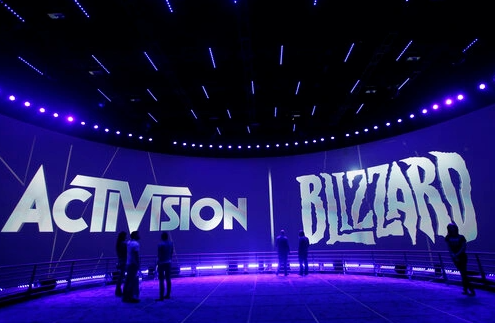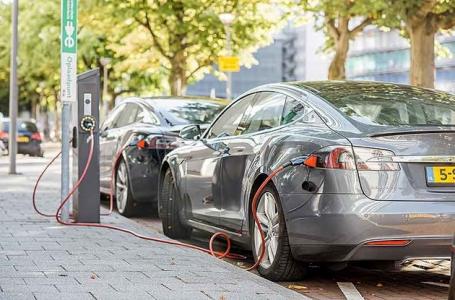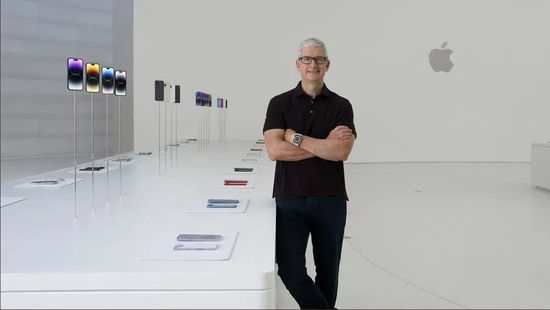your current location is:Home > investHomeinvest
The container planting vegetables that the Musk brothers fancy suddenly caught fire
When it comes to Musk, most people think of Tesla CEO Elon Musk. In fact, he also has a younger brother: Kimbal Musk (Kimbal Musk). Kimbal is one year younger than Elon. The two brothers joined hands to start a business in their early years. As early as 1995, they established the business information website Zip2. A few years later, Zip2 was sold to Compaq Computer for $300 million, and the Musk brothers got their first pot of gold.
Since then, the elder brother has successively founded PayPal, SpaceX, Tesla and other companies, and has become the world's top entrepreneur in the past two decades; the younger brother is relatively low-key, mainly engaged in investment work, and is now a board member of Tesla and SpaceX.
Compared to Elon, who is busy building cars, ships, and tweeting, Kimbal's real interest is people's dinner tables.
Since 2005, Kimbal has established a series of catering related enterprises. The most notable of these is Square Roots, a company founded in 2016.
This is a new type of planting enterprise focusing on "vertical farming". It provides people with modified containers for growing fruits and vegetables. The container is equipped with lighting, water supply, temperature adjustment and other facilities, which can be controlled by sensors and computers to ensure that crops grow in the most suitable environment. Square Roots calls it a "community farm on a shipping container."
Novel concepts, innovative technologies, and the celebrity effect of Musk's younger brother made Square Roots attract a lot of attention at the beginning of its establishment. In 2017 and 2019, the company raised a total of $24.5 million.
To date, however, Square Roots hasn't made much progress. There are many reasons, and price is a big hindrance. City dwellers wanting to grow vegetables in a Square Roots shipping container would be required to pay a $5,000 deposit, which is unthinkable for the vast majority of Americans.
More importantly, Square Roots has not been able to solve the problem of scaling.
Due to the high cost of container farms, Square Roots is limited by the scale effect and can only choose unpopular crops with high added value, such as basil, coriander, dill, etc., to supply local high-end restaurants; and the demand for these products is not large, but further leads to The business model of growing vegetables in containers is difficult to work through.
Kimbal originally envisaged that the company would enter 20 cities in 2020, with the ultimate goal of setting up a plantation in each city; but so far, Square Roots has only operated in New York City, Michigan and Wisconsin in the United States. The goals are far from one another.
However, the huge imagination space and practical value of vertical farming still attract players from all over the world.
On August 9, Pinduoduo, Guangming Homeport, China Agricultural University and Zhejiang University jointly launched the "2022 Bright Duoduo Vertical Agriculture Challenge" and the third "Duoduo Agricultural Research Technology Competition".
Different from the previous two editions, this year's Agricultural Research Competition will move the venue to a container farm in Chongming, Shanghai. The participating teams need to set and adjust various parameters such as light, temperature, moisture, fertilizer and gas in the container without soil and sunlight, so as to grow lettuce with high quality, high yield, lower energy consumption and faster growth.
The relevant person in charge of Pinduoduo told the Alphabet List (ID: wujicaijing) that this competition requires players not only to "plant a lot" and "plant well", but also "low energy consumption and short time consumption", and more importantly, "easy to plant". promotion".
It has always been the biggest challenge for agricultural science and technology innovation to get crops out of the laboratory and take root in the fields. It means that the technology itself is adaptable and reusable enough to quickly dilute costs through scale and satisfy the tastes of most consumers. Clearly, this is the right but difficult path.
However, under the traditional agricultural R&D model, most new products stay in the laboratory and cannot really enter the market. The participation of Internet companies in agricultural research has brought technology and funds, and it is also expected to bring new changes to the evolution path of "lab to table".
A
Vertical agriculture, represented by container farms, first started in the 1970s. The purpose is to find a way to break the situation of shrinking land resources in the wave of global urbanization, so that agricultural production and human society can coexist harmoniously.
Compared with traditional agriculture, container planting has many advantages: it does not depend on natural sunlight and precipitation, and can be planted and harvested all year round; it can build its own water circulation system, reducing water consumption by more than 80%; isolated from the outside world, the crops in the container Free from pests and diseases, no need to use pesticides; using hydroponics, no need for traditional chemical fertilizers, etc.
The key is that the containers and planting racks can be stacked in multiple layers, which minimizes the occupation of land. Vertical farming is very attractive for those areas where land resources are tight.
At present, in addition to Square Roots and other players in the United States, many vertical farming startups have emerged in densely populated, arable land and water-stressed countries such as Israel, the United Arab Emirates, and Malaysia.
Taking Israel, which has a small land area and a harsh natural climate, as an example, a local company called Vertical Field entered vertical farming very early and introduced "container urban farms" to China in March 2020. This container can be plug and play, with its own embedded automatic irrigation and fertilization system, and with the Internet of Things technology, each container can produce 12 tons of vegetables per year.
Another Middle Eastern country, the United Arab Emirates, makes money from oil, but also faces natural shortcomings in agriculture. In July this year, the country spent US$40 million to set up a 330,000-square-foot (about 30,000 square meters) vertical hydroponic farm in Dubai. .
China started late in the field of vertical farms, but it has developed rapidly, and its technical level is not inferior to that of foreign counterparts. One of the organizers of this competition, Guangming Homeport, has been using containers to build a "plant factory".
According to reports, the technical experts of Guangming Home Port transformed the container into a small vegetable production workshop with three or four layers of planting racks inside. The planting trays on each layer contain nutrient solution, which can maintain the set concentration through consoles and pipes.
At the same time, the light, temperature, humidity, carbon dioxide concentration, etc. in the container are controlled by automated equipment, and crops can grow as planned in an artificial environment to ensure high quality and high yield.
Many industry insiders believe that with the increasing shortage of land resources and the continuous improvement of agricultural technology, the value of vertical agriculture will be further highlighted. At the same time, consumers prefer healthy and fresh ingredients, and their requirements for delivery timeliness are getting higher and higher, which has brought high-value new demand, allowing container farms to take root in cities and provide services to surrounding residents. landing scene.
However, as of now, most vertical farms at home and abroad are in the experimental stage, and there is still a gap between large-scale commercial use. According to data from GlobeNewsWire, the market size of vertical farms in China in 2020 is about 4.26 billion yuan, and it is expected to increase to 12.84 billion yuan in 2026, with a compound annual growth rate of 24.6%. Compared with the trillion-dollar agricultural market, this number is almost negligible.
B
Vertical farming, which has a history of nearly 50 years, has not been able to be implemented on a large scale, and the high cost is an important reason.
36Kr once pointed out in a report that vertical farms are an industry with high fixed cost input and entry barriers , and the construction cost of a single farm is high. In addition, its requirements for technology and talents are much higher than those of traditional agriculture.
In response to this pain point, this year's agricultural research competition pays special attention to cost issues, and takes the temperature, light, water, fertilizer and gas in the container as the core assessment points. Wang Jinhua, agricultural director of Guangming Homeport, said that the contestants are like pianists, but they write a series of neat codes, which will replace the operators for intelligent control.
For example, for lighting costs, contestants need to write codes to formulate suitable "recipe lights" to meet the needs of different growth stages of plants.
In addition to construction and operation and maintenance costs, another major factor hindering the development of vertical farming is the decoupling of production and demand sides.
Emerging agricultural production methods, such as container farms, usually start from scientific research institutes or are driven by startups. They are limited by their field and accumulation of experience, and it is difficult to gain first-hand insight into the consumption trend of agricultural products. Although the products are good, it is difficult to match the market demand. The high cost of container farms makes them unable to choose low-priced conventional varieties of agricultural products, which further reduces the potential consumption space.
In this agricultural research competition, the new challenge faced by the contestants is "easy promotion" , which has higher requirements for technical strength and cost control. On the other hand, the organizers of the event are also trying to open up new channels to allow consumers to participate in the research and development of agricultural products, and to provide teams with a more intuitive picture of their needs.
It is understood that in addition to the expert judges, this competition also plans to introduce "public judges" to invite consumers to experience tasting, and their feedback will be used as one of the selection references; at the same time, the high-quality lettuce planted by the finalist team will be sold through Pinduoduo .
How to make the proven agricultural technology roll out as soon as possible has always been one of the focuses of the Pinduoduo Agricultural Research Competition. Most of those teams that reduce costs and increase efficiency and are more easily accepted by farmers become the winners.
For example, the Zhiduoberry team won the second prize in the agricultural research competition, and then started corporate operations and launched a strawberry AI planting model. Ideally, this model can increase the yield of strawberries per mu from 2 tons to 3.5-4 tons, and the cost of common labor can be reduced by more than 30%.
At present, this system has been implemented in many places. In a large farm, seven people were required to irrigate more than 100 greenhouses; now, after the introduction of AI technology, only one person is required to manage them. The Zhiduoberry team previously stated that in the past, an expert could only serve 100 mu of land, but with AI, an expert can serve 10,000 mu of land.
"Tomato Fast Growth" is the champion team of the 2021 Agricultural Research Competition. It has developed its own disease management system. By installing sensors in the greenhouse, while monitoring the indoor climate and plant growth, it can also predict and help avoid most disease risks. thereby increasing production. The system will then be piloted on a small scale and will be rolled out nationwide in the future. In addition, the smart tomato digital management and control cloud platform, the tomato growth status recognition model, and the new light and simple greenhouse carbon dioxide enrichment technology, etc., which participated in the competition in the same period, have also gradually entered the stage of implementation and promotion.
C
Vertical agriculture represented by container growing vegetables and the application of AI and other cutting-edge technologies in agricultural production are inseparable from the rise of agricultural product e-commerce.
The application of new technologies often means an increase in the added value of agricultural products, which in turn leads to price increases. Under the traditional consumption model, the production of these new products is limited in the initial stage of the market, and the sales scope cannot break through the local market, and it is often difficult to open up sales. And the lack of demand, in turn, makes the price passively rise, resulting in the inability of good products to really go from the laboratory to the table.
In the past few years, e-commerce platforms such as Pinduoduo have increased investment in agriculture, bringing new opportunities for technological innovation and consumption upgrading of agricultural products.
On the one hand, the e-commerce platform goes deep into the upstream of the supply side, actively participates in the research and development of agricultural products , and promotes the adaptation and implementation of cutting-edge technologies such as AI, big data, and the Internet of Things in agricultural production, and accelerates the process of agricultural digitization through interdisciplinary cooperation.
For example, Pinduoduo has held agricultural research competitions for three consecutive years, with the goal of improving land productivity and labor productivity through technological innovation, helping farmers reduce costs and increase income. Among them, the strawberry AI planting model has been verified in the field and has played a role in reducing costs and increasing efficiency in many places.
At the same time, e-commerce platforms have spent a lot of money on agricultural technology research and development. Pinduoduo set up the "Ten Billion Agricultural Research" special project in August 2021, and has now invested all the company's profits in the second half of last year and the first quarter of this year. Affected by this, Pinduoduo's R&D expenses in 2021 will increase by 30% year-on-year.
On the other hand, the e-commerce platform has the advantage of covering the national market, which can gather the differentiated needs of different consumer groups, and match with large and small supply-side merchants to improve the reach of non-standard products and new products in the cold start stage People and sales conversions. In the agricultural product sector, this model is called "agricultural land cloud spelling" by Pinduoduo.
Previously, the important application scenarios of "agricultural land cloud spelling" were those local specialties that were unknown to outsiders. For example, consumers in Beijing, Shanghai, Guangzhou and Shenzhen did not know the passion fruit that is abundant in Guangxi before, resulting in an imbalance between supply and demand of this characteristic fruit and frequent unsalable sales. However, in the past two years, driven by a single popular model, passion fruit has become an Internet celebrity on e-commerce platforms, and sales, prices and sales regions have all improved significantly.
The same methodology can also be applied to the "cyber lettuce" grown in containers, so that the audience of vertical farming is no longer a small group of surrounding residents, and consumers across the country can rely on cold chain logistics for tasting. In this year's Agricultural Research Competition, the high-quality lettuce grown by the finalist team will be sold on Pinduoduo; although it has the nature of testing the water, it also marks that the chain from research and development to market for an agricultural product has been greatly shortened by the e-commerce platform.
The e-commerce platform is deeply involved in agricultural research, and a new type of agricultural technology enterprise of "Internet + agricultural research" is about to emerge. It is different from traditional farms and agricultural research institutes, and it is not a pure agricultural product e-commerce company, but an organic integration of the two.
This new method of production organization has also attracted many urban young people to devote themselves to farmland. According to the "2021 New and New Farmers Growth Report", there are more than 126,000 "new and new farmers" born in the 1995s on the Pinduoduo platform.
Zhao Chunjiang, an academician of the Chinese Academy of Engineering, previously pointed out that it is expected that by 2025, the scale of China's agricultural digital economy will reach 1.26 trillion yuan. In this blue ocean track, cutting-edge technologies such as container planting and AI planting of strawberries are expected to accelerate their implementation with the help of e-commerce platforms and become a new driving force for agricultural development.
Previous:NVIDIA's efforts to clear inventory and sales are unexpected: graphics cards are on the rise again
related articles
Article Comments (0)
- This article has not received comments yet, hurry up and grab the first frame~













